Let’s clear up the matter once and for all:
Are Rosicrucians Christian or NOT?
After announcing my intention to review all of the Rosicrucian Orders in my last blog post a few objectives were also clearly set out in order to complete the process. The first of these objectives is to determine the real nature of the Rosicrucian Order. After all how can anyone hope to clearly review those varying pedigrees without having some sort of measuring stick by which to judge them?
Just to recap, I am going to review each order, award them with star ratings and a points system, based upon their merits, teachings and community spirit. They are going to be placed under the microscope.
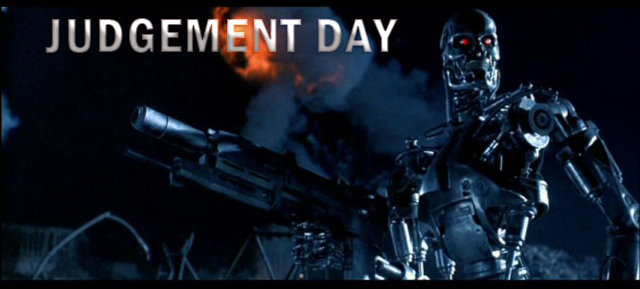 We have to turn to the original sources that inspire the movement, particularly the Rosicrucian manifestos of the early 1600’s and start from there. Several symbols and orders may prove valid going into the 1700’s, in an era when alchemy was still practiced and the original Rosicrucian ideals were still fresh in their European minds. Today what we are going to focus on is an often heated argument, concerning the real core of the Rosicrucian teachings; are Rosicrucians really Christian?
We have to turn to the original sources that inspire the movement, particularly the Rosicrucian manifestos of the early 1600’s and start from there. Several symbols and orders may prove valid going into the 1700’s, in an era when alchemy was still practiced and the original Rosicrucian ideals were still fresh in their European minds. Today what we are going to focus on is an often heated argument, concerning the real core of the Rosicrucian teachings; are Rosicrucians really Christian?
This question raises some issues. Are Rosicrucians really Christians at a hardcore level, and if so does that mean you have to be a Christian in order to be a Rosicrucian today? Several Rosicrucian Orders today have nothing to do with Christianity and often make no or little mention of Jesus Christ himself. In some circles the big J.C is a taboo name conjuring up images such as torture, Templar hunting and witch trials.
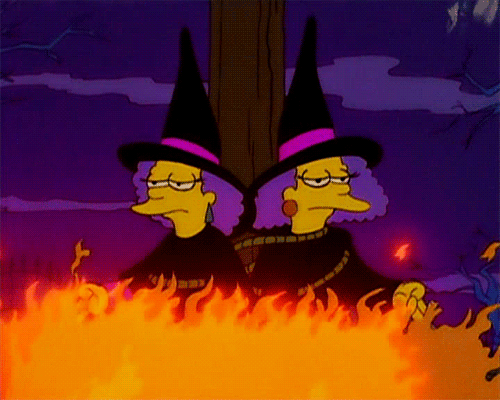 For some what the church has done has become so negatively ingrained it is impossible for them to accept Christian symbols. Being a NZ Maori I can relate to these issues as they are still being addressed back home. As a result of these ongoing issues you today see more interest in bodies like the RR et AC, which blends Osiris with Christ and you can understand how many seekers find this ‘Solar’ way of approaching Christ as being more ‘palatable.’ But this ain’t your mother trying to make you eat your vegetables kids.
For some what the church has done has become so negatively ingrained it is impossible for them to accept Christian symbols. Being a NZ Maori I can relate to these issues as they are still being addressed back home. As a result of these ongoing issues you today see more interest in bodies like the RR et AC, which blends Osiris with Christ and you can understand how many seekers find this ‘Solar’ way of approaching Christ as being more ‘palatable.’ But this ain’t your mother trying to make you eat your vegetables kids.
Now, I’ve seen Adepts in various orders try to address this issue and normally they answer ‘YES the Rosicrucian current is CHRISTIAN.’ But hold up a minute. Is that really an informed summation?
I think not. I am going to clear up this issue once and for all. My qualifications to undertake this task is that I’ve been carefully tutored in Germany over a seven year period by the last surviving Pansophist. He spoke openly about forgotten elements of the original tradition and today I’m going to highlight one of those for you as well, seeing that the Christ-or-NOT debate needs silencing once and for all.
In order to break down this argument you’ll get two phases:
Phase One: Addresses what MOST people know about the early Rosicrucians. Phase Two: Addresses something you DIDN’T KNOW.
Onwards!
Phase One: What Most People Know About the Early Rosicrucians.
The three main manifestos of the Rosicrucian Brotherhood:
- The Fama Fraternitatis – 1614
- The Confession of the Rosicrucians – 1615
- The Chemical Wedding of Christian Rosenkreuz – 1616
There is a forth manifesto worth examining which I discuss here. Now, to be clear, these original Rosicrucian manifestos do mention the importance of Christ, and they are quite explicit at that:
The Fama says that upon the round altar of Christian Rosenkreuz was written:
‘Jesus mihi omnia.’ Which means ‘Jesus is Everything to Me.’
The Confession also affirms Christ saying:
‘We sincerely confess Christ.’
The Chemical Wedding on the other hand:
Makes no mention of Christ, no mention of the word Jesus. Nothing. Nada. Nil.
However, it is about the same character Christian Rosenkreuz, whose name says it all.
That pretty much sums it up for most people. Many Adepts are happy to settle for the obvious. Yet the riddle of the Jesus puzzle in our tradition does not stop there, because as you shall see in phase two; there is something very UN-CHRISTIAN about certain symbols and gods that appear in the Rosicrucian manifesto tradition. Yes there are actually pagan gods and pagan sages tied to the early tradition!
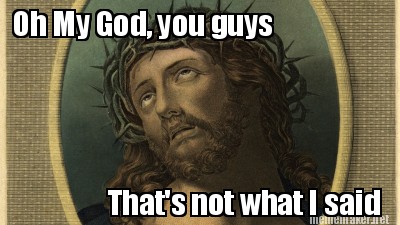 Yet you have to wonder at what sort of Christianity do the manifestos imply, and what kind of Jesus figure for that matter? A real person or an internal Christ Consciousness? Are we to conclude that the Rosicrucian mysteries are simply Christian, as if merely a blend of alchemical mysticism linked to the Protestant Christianity that abounded in Germany? Does this invalidate any Order that replaces Christ with more Egyptian solar symbols as well?
Yet you have to wonder at what sort of Christianity do the manifestos imply, and what kind of Jesus figure for that matter? A real person or an internal Christ Consciousness? Are we to conclude that the Rosicrucian mysteries are simply Christian, as if merely a blend of alchemical mysticism linked to the Protestant Christianity that abounded in Germany? Does this invalidate any Order that replaces Christ with more Egyptian solar symbols as well?
It would appear that Jesus seems absolutely necessary and to this I would have to agree in terms of reviewing the Rosicrucian Orders. A Jesus symbol should at least be present and some wisdom should be gleaned from Christ in one form or another. That is why in my reviews of the Orders; if any particular Order fails to show they have sufficiently represented the Christ mystery, they will lose points.
That’s right. I will rate their ‘traditional Adherence Score’ lower for failing to represent a Christ symbol.
Now, here is the part that 99% of people calling themselves Rosicrucians don’t know.
Phase Two: PAGAN GODS: What You Didn’t Know About the Rosicrucians.
Upon closer examination of the manifestos there is something going on that most people have entirely missed. After reading this I am sure you will no longer refer to Rosicrucians as simply Christian.
You see, while choosing to represent an apparent Christian tradition, the writers of the manifestos also chose to incorporate themes and symbols that are very un-Christian. In fact viewed through the lens of strict Christianity these themes are outright blasphemous and pagan. What is really happening is that the Rosicrucian manifestos are only Christian at a surface level. There are deeper layers to see.
Let’s examine the Fama and the Chemical Wedding one more time.
The Fama Fraternitatis is in fact a written response to an earlier document circulated in Italy. As Arthur Waite points out, in 1614, the same time as the Rosicrucians announced their existence in Germany, a pamphlet was anonymously published in Germany, it was titled: ‘Die Reformation der Ganzen Wieten Welt’ meaning: ‘The Reformation of the Whole Wide World.’
It contains a proposition for the founding of a secret brotherhood, which should have as its main objective the spiritual health of humanity. It is in fact a German translation an Italian work by Trajano Boccalini telling the same story. The original Italian title is none other than ‘A Universal Reformation of the Whole Wide World, by Order of the God Apollo, to the Seven Sages of Greece.’
Did you get that? By the command of Apollo, not Christ, not God, but a golden haired sun deity.
Arthur Waite writes that it has been ‘reprinted with the society’s manifestos’ and that ‘it is cited by various authors as the first publication of the Fraternity.’ Need I say more?
Inside the pamphlet we learn that the god Apollo has become dissatisfied with humanity, he begrudges our social and philosophical condition, so much that in his eyes we have fallen into a state of cultural vulgarity. His solution is to send out the Seven Sages of Greece, who in their wisdom should form a secret society which shall rescue us by enlightening and reforming culture and humanity.
Answering this pamphlet, the Rosicrucian Fama then appears on the scene, telling the story of the formation of a secret brotherhood led by a person known as Christian Rosenkreuz. Their goal? The reformation of the world of course!
Yet it is not only a written response it is a symbolic mirror, as the Fama tells us of mystic brothers surrounding Christian Rosenkreuz who are seven in total. So why seven sages and seven mystics?
Apollo | C.R.C |
Solon of Athens | I.A |
Chilon of Sparta | G.V |
Thales of Miletus | R.C |
Bioas of Priene | B. |
Cleobulus of Lindos | I.O |
Pittacus of Mitylene | P.D |
Periander of Corinth | G.D |
According to the tradition of the Seven Sages of Greece guarded a cup that was sacred to their god Apollo, a golden cup of immortality which seems to be represented in the immortal state of the incorruptible body of C.R.C who lies inside the seven sided tomb. Clearly the seven Rosicrucian brothers who began the Order take on the positions of the Sages of Greece as living manifestations, with CRC himself in the place of Apollo; god of the muses and the ancient Liberal Arts.
Now, as Arthur Waite points out, most early examiners of the Rosicrucian movement viewed the Fama not as the first of the manifestos like readers do today, but instead saw it as the second, the first being this document detailing the commands of Apollo and his noble wish for our cultural reformation.
That doesn’t sound very Christian does it?
The Chemical Wedding of Christian Rosenkreuz contains an additional pagan enigma.
In it our founding father C.R.C witnesses a vision of the goddess Venus:
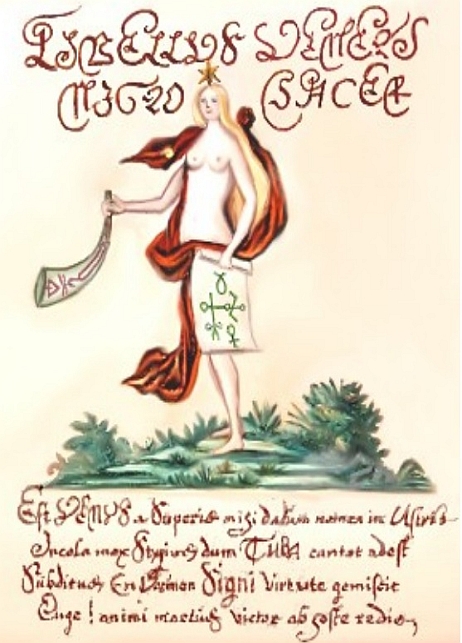 “I looked back, and behold it was a fair and glorious lady, whose garments were all sky-colored, and curiously (like Heaven) bespangled with golden stars; in her right hand she bore a trumpet of beaten gold, on which a Name was engraved which I could well read but am as yet forbidden to reveal it. In her left hand she had a great bundle of letters of all languages.”
“I looked back, and behold it was a fair and glorious lady, whose garments were all sky-colored, and curiously (like Heaven) bespangled with golden stars; in her right hand she bore a trumpet of beaten gold, on which a Name was engraved which I could well read but am as yet forbidden to reveal it. In her left hand she had a great bundle of letters of all languages.”
let’s face it. The ‘lady with the horn’ ain’t that Christian either. But how do I know she is Venus?
Well there are several reasons. The first being that later in the Chemical Wedding we read:
‘Here lies buried Venus, that beauty which has undone many a great man both in fortune, honor, blessing and prosperity.’
But how can we know for sure the lady with the horn is Venus?
Well as it turns out the Chemical Wedding again borrowed symbols from an earlier work. This time the Rosicrucian writers were borrowing from a work known as the ‘Little Book of Black Venus,’.
This image is the original cover image from this old magical treatise. The book is quite interesting because clearly Venus is shown holding the horn and as the Chemical Wedding states above: “In her left hand she had a great bundle of letters of all languages.” What’s more this book dated 1580 is attributed to John Dee; said to be a key inspirational figure behind the Rosicrucian movement.
Having viewed this, then what exactly are we dealing with here if we are not dealing with Christianity?
Clearly Apollo and Venus are not very Christian… But it’s not like I am ruining your childhood beliefs kids.
Those who have been telling you that the ‘Rosicrucians are strictly Christian’ really only refer to the surface aspects of the manifestos as evidence. Yet there is clearly more source material at work behind those treatises and their symbols have crept into those documents. In short merely pointing at the manifestos without looking at these other symbols/influences is missing the forest for the trees.
My essential conclusion therefore is that the Rosicrucians were not Christians exactly. They were Hermetic-Christians in their doctrine and spirit. Hermetic-Christianity is a more precise term.
As the term Hermetic implies the wisdom of Hermes is at work, dawning knowledge from a more ancient time, which relies on the wisdom of pagan sages just as much as it does Christian prophets. Like Gnosticism Hermetica deals with Gnosis, and yet we should bear in mind that the Gnostics themselves were haters of Nature, as they considered Nature a trap and prison to the soul from which they sought escape. The Hermeticists on the other hand saw Nature as a revealer of the Wisdom of God, and the Rosicrucians can be clearly seen as adopting this view of Nature. In fact if you read the manifestos carefully both Jesus and Nature are considered the way to godhead and enlightenment. So against the grain of the majority, I believe Rosicrucians were closer to Hermeticists rather than to Gnostics.
This also suggests that Gnosticism is a poor substitute for providing teachings to Rosicrucian students.
In many ways what I have uncovered here in fact validates those Rosicrucian Orders out there that do use Egyptian and Greek symbols in their rituals. Certainly in the Golden Dawn RR et AC, which is their Rosicrucian Inner Order, C.R.C/Christ/Osiris are considered as three veils of one universal solar god principle. Christian Rosenkreuz is the human figure, which is initiated through the spirit of Christ delivered through the vehicle of the Egyptian mysteries of Isis and Osiris. That sounds more in line with the spirit of the manifestos. Several other Egyptian influenced Rosicrucian Orders exists, such as the FAR+C of France and the Cromlech Temple, not to mention personal friends of mine who belong to the Ordo Rosae Aurae in Germany under Martin Erler, which is Neoplatonic and Egyptian. All in all I find these orders far more versatile which is clearly in the spirit of the original R.C brotherhood.
This is why in my following reviews of the many Rosicrucian Orders I shall place emphasis on the necessity of having a Christ symbol as the manifestos state, yet keeping with the flexibility of the universal syncretic and inclusive Hermetic thinking of the original Rosicrucians. Different Orders will be measured against this index, showing how Hermetic-Christian they are, to varying degrees.
This aspect of the reviews will count for 20 points out of 100 and this score will be called ‘Adherence to the Original Manifestos’ covering several aspects of that Order’s adherence and representation of the original manifestos and the very symbols, diagrams and teachings set out therein. Other aspects of the manifestos will be considered under this score which I shall address in my next blog post.
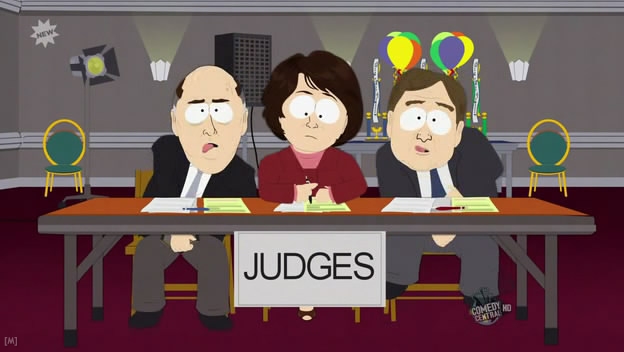 I should point out however that for some of you this particular score may get ugly because this will play out somewhat negatively for Orders that beat a strictly Christian drum, that choose to be strictly Protestant, Anglican, or Catholic, and reject any notion of this Hermetic spirit. Orders that are exclusively Christian to the extent of failing to recognize the importance of broader Hermetic symbols will be scored down as it shows they haven’t quite keyed into the original intentions and versatile thinking behind the original movement. I am looking to score and award representations of Hermetic-Christianity.
I should point out however that for some of you this particular score may get ugly because this will play out somewhat negatively for Orders that beat a strictly Christian drum, that choose to be strictly Protestant, Anglican, or Catholic, and reject any notion of this Hermetic spirit. Orders that are exclusively Christian to the extent of failing to recognize the importance of broader Hermetic symbols will be scored down as it shows they haven’t quite keyed into the original intentions and versatile thinking behind the original movement. I am looking to score and award representations of Hermetic-Christianity.
I welcome any feedback and assistance in better defining the Rosicrucian current and completing these reviews. My goal here is not to discredit any Order, but rather to establish a clear standard by which to measure every Order by the same rule. In creating this score I have drawn from my own Pansophic knowledge derived from my time in Germany. It was my mentor who was kind enough to point out that the Rosicrucians were clearly far more progressive than their Protestant contemporaries in Germany. Indeed we have found; Christian they were, yet coupled with ancient gods, pagan symbols, and answering to a call from Italian Neo-Platonists. To me the Rosicrucian enigma is beautiful and through these posts I hope the tradition is becoming clearer for you and that we may relive its mystery.
Your friend on the path.
Samuel Robinson
Founder of Pansophers.
Rosicrucian Commentaries
This section offers commentaries on my blog post from Rosicrucian brothers and sisters from other Rosicrucian Orders. Hailing from several organizations this section brings us together in a new incentive, started right here at the Mystica Aeterna, in order to help develop sharing and community throughout our beautiful tradition, no matter our differences, forming us into one Rosicrucian brotherhood, of connection, compassion and sharing.
Telemachus – Martinist Order
“We must create a clear distinction on what is originally Christian, and was presented to us as Christian at a later date. Obviously Christianity does not begin with Christ, as Christ would have never wanted the Christian current to be called as such. Christianity is a continuation of a current that existed primordially. In effect the Rosicrucians that connect with that current could be called Christian. The bottom line is that Rosicrucianism is not an Order, but a state of being.”
Tomas Stacewicz – Hermetic Order of the Nascent Aurora
Regarding the supposed notion that the R+C current somehow is Protestant or Lutheran in nature, I don’t at all accept that opinion. The R+C current is above all ecumenical. Many individuals who push the opinion of R+C being Protestant conflate “Protestant” with being anti-papal, as the ‘Fama et Confessio Fraternitatis’ were openly anti-papal. However, the later Golden Rosicrucians, I believe, were very disappointed with Lutheranism and especially with the war between the two sects because of the 30-years War. The Pietist movement was a sort of “counter-reformation” or a “re-reformation” of the original reformation, and many early members of the German Golden Rosicrucians (Gold und Rosenkreutz) were Pietist in their religious convictions. Meanwhile, their Italian brethren were still rooted in their Catholic heritage. Also, the Böhmians or Christian Theosophians were ecumenical and they allowed both protestants and catholics to join their ranks, as were also the protocol of the German Golden Rosicrucians, etc.
The actual “Christianity” practiced by the R+C brethren and sisters were neither Catholic nor Protestant, or Orthodox for that matter, as all of these Christian Churches were exoteric in nature while the R+C Adepts pursued a Esoteric or “Hermetic” form of Christianity, which regarded Christ to be a symbol of a principle or force rather than a concrete being, which could easily be corresponded with earlier deities that represent the daily and yearly movement of the Sun, the Formula of the Dying and Resurrected God. Actually, the Christian roots of the Rosicrucians are Egyptian and ancient rather than early modern and European. However, the Rosicrucians had no problem with being outwardly Protestant, Catholic or Orthodox and practicing in exoteric sacraments, as they through their esoteric initiation could rightly decipher the symbology of the sacraments and iconography present in the Church. At the same time, in the 18th Century there were some efforts in creating a kind of Rosicrucian Christian Church somehow attached to the Golden Rosicrucians, at least in Sweden. There existed Swedenborgian congregations in Sweden as well, many who attracted Swedish Rosicrucians and Alchemists.
Alchemy uses the iconography of the Christian religion and its myths to decipher its processes, as it has done also using pagan symbology, prominently the Greek and Roman pagan traditions. This also underpins the way that the Rosicrucians regarded exoteric religion, in particular the Christian one which was their religion of choice, that the Christian gospel better than any other contemporary religion could carry and incorporate Hermetic motifs and teachings. They had no problem with blending Christian motifs with Pagan, which underlines how they saw the Christian message – as a late incarnation of a Primordial Tradition. This was furthermore projected to Theurgical practices as well, which were used in tandem with Alchemical practices. The last and modern example of this was in Fulcanelli’s writings, which uses much Christian metaphors.
Nick Farrell – Golden Dawn
I dont see the 5-6 being particularly christian — to me it is a more Alexandrian approach where different Gods are used according to function. Jesus is good as a sacrificial god at this point we will use him…. Osiris is good here we will use him.
I dont see a specifically gnostic theme either. One of the cruicial magic bits is when the candidate casts down their (balanced) lower self to be a god of the unbalanced forces. There is nothing in gnostism that matches this caring for the material forces.
Rosicrucianism is protestantism in its widest Renaissance sense. BUt you have to understand that elements of things like early Lutherism had their cabbalistic streak and even their mystery religion side.
These elements pale before the working vault which features in none of the various elements that have gone before it. In the Rosicrucian myth, the vault was an allegory of all esoteric information and not a place.
However there is far too much heresy for it to be seen as a Christian ritual. Although a Christian is told to take up their cross and follow christ, the central mystery does not involve them replacing Jesus as the living sacrifice. Dying to the old and arising to the new is specifically not done by actions but by faith in Jesus. When a person willingly straps themselves to the cross they are doing something extremely naughty in Christian terms. In the GD 5=6 CRC (the supposed Christ figure) is seen as dead in his tomb (again the idea that Jesus is being depicted as dead is heresy (it is also so in Egyptian myth).
My view is that the 5=6 is a patchwork of linked ideas using Christian, Egyptian and Rosicrucian concepts to attain an aim. It is not bound to those particular ideas but the result.
Paxton Knight – Kabbalistic Rose Croix
Kabbalistically, we don’t have to be so concerned with whether or not the Rosicrucian movement is Christian, per se.The art still revolves around the only professed article of the Rosicrucians – which is: healing (gratis…nonetheless). This is identical to the Kabbalistic concept of the restoration of the sparks of the shattered vessels that once comprised the original matter.These fractured shards are the substance of the multidimensional universe we call reality.The term for this restoration in Kabbalah is: Tikkun – which I have mentioned before in several previous posts.Arguably, Tikkun is the essential reason for the creation of the various manifested Worlds. Why? Because it affords choice or motion.
This restoration is performed by the conscious interaction of humanity within the body of G_d (also called Adam Kadmon/AK).AK is conceived as the universe in its entirety from the highest heights to the lowest lows.Between any two particular levels (spheres/points/numbers) of its revealing, a certain veil occurs to afford a separate identity for any of those particular points so that their being might not be lost in the subsuming one-ness with the all-unifying-source. Yet Adam Kadmon not only has a vertical spectrum between spiritual and manifested reality, it also has a horizontal spectrum between construction and destruction or force and form.Together these form the constituent extremes of the Cross – Keter to Malkuth and Chesed to Gevurah.
In our Rosicrucian paradigm, when these two extremes meet on any level, something fantastic occurs.The Cross creates four separate 90 degree angles that sum to 360, or create a circle – in other words, a new universe, perspective or flower is born.On the Tree of Life, this is expressed through the central column and the Sephiroth of Yesod, Tiphareth and Da’ath.Keter and Malkuth are not included as they are two of the poles wherein the three degrees of change occur.
So in a modern sense, the Tikkun is achieved through a type of Tantra of sorts; a union between opposites which (on the Tree of Life) occurs in three separate stages.They involve Hod and Netzach with Yesod as their synthesis, Gevurah and Chesed with Tiphareth as their union and finally with Binah and Chokmah as Da’ath as the union.Each Tikkun represents an unfoldment of awareness on each level. And there can actually be ascribed three separate blossom/flowers to each union; the Rose being specific to the union of Chesed and Gevurah in Tiphareth.
So, Yes! JC is definitely central to the Rosicrucian Mystery, but he serves more as a prototype of perfection; an image of the entirety of the work on one particular level.He is identical with the cosmic lower man/child [or “parzuf” (persona) called Zaur Anpin in Kabbalah].
Chavah Aima – Builders of the Adytum
This is a great review of the many traditions that informed and inspired the Rosicrucian path. It’s important to note that many R+C scholars reject the idea that the Chemical Wedding was authored by the same author(s) of the Fama and Confessio. In light of the drastically different writing styles and content purposes of the Fama/Confessio and Chemical Wedding, it’s wise to discern which documents contain actual criteria that identifies the essence of the R+C Order and its members, and which one may perhaps illuminate approaches to realization of that criteria.
In my own R+C journey, I have not felt Chemical Wedding to be critical to understand the intentions, standards and purposes of the R+C. I feel the Fama and Confessio are the primary documents that serve this function. Nevertheless, Chemical Wedding makes its own important contribution toward understanding the R+C. There is also much controversy among R+C scholars and groups regarding Edward Arthur Waite, and his opinions as well. In light of more objective sources I’ve studied regarding the R+C, I also apply great discernment to anything written by Waite. If, as this post suggests, the Fama was written in response to an earlier document, which may well be the case, it can be said that connections between Apollo, Osiris and Jesus are not hard to find. It is not difficult to understand that the R+C authors of the Fama had specific motivations and purposes to the replacement of Apollo with Jesus. After all, these works were written in the 17th century when the burning of heretics by church and state authorities was still commonplace. Yet, there were extremely important spiritual reasons for this as well.
It’s clear that the idea of Christ is integral to R+C philosophy. What the R+C means by this, however, has nothing to do with any organized religion. The idea of Christ was important enough that the leader and founder of the R+C in Europe was named, Christian Rosenkreuz, meaning, Christian Rose Cross. In order to really understand this name, we must look to the early followers of Jesus, the Coptics and Gnostics. Here we find written evidence of a level of initiation, after which a disciple was known as a Christ-ian. These details are found in the Gospel of Philip, which was found in Egypt in 1945, along with several other ‘Gnostic’ Gospels. They have been validated by scholars as dating to the same time period in which the four gospels of the present-day Christian religion were written. The founder’s name also highlights the rose and the cross, the basis of the name, Rosicrucian.
The cross at first appears to be a Christian symbol, and has certainly been adopted by religions that use the name Christian. However, just as Philip describes an entirely different meaning for Christ-ian, so is the cross a symbol that predates Jesus. It is found in pagan symbolism and is also mentioned in temple scrolls as being represented during certain Egyptian initiatory rites. The story of Jesus reveals that he spent his entire adolescent and young adult years in Egypt. The Coptic and Gnostic gospels, which all reveal a completely different story of the life and teachings of Jesus from what is commonly known, were found hidden in caves in Egypt.
There is much evidence and many scholars who believe that Mary Magdalene was also Egyptian. The four gospels mention that the rituals she performed, including anointing, were foreign to the other disciples. The rite of anointing itself is also found in Egyptian temple scrolls, and it is this rite that Philip states constitutes the initiation to be a Christ-ian – not baptism as the churches believe. Mary also was connected to the temples of Isis, and plays the same role with Jesus that Isis plays with Osiris in the Egyptian mysteries. Serving as his consort and companion, she searches for his body and speaks the same words Isis speaks when she discovers her beloved has been killed, his body has been dismembered and scattered: “They have taken my Lord and I do not know where he is.” There’s no mistaking the replay of the Isis and Osiris myth in the story of Jesus and Mary.
Anyone who spends a little time reviewing ALL of the available existing gospels, the mythos of Isis and Osiris, and current scholarly research, will soon discover that the entire Christian religion was founded upon distortions, and in some cases, outright lies. St. John, the ‘beloved’ disciple of Jesus, while in exile, wrote Revelation, describing the Church of Rome as the ‘anti-Christ. It’s crucial to note that, at that time John wrote Revelation, the pope and his cohorts were the only organized, hierarchical entity attempting to create a religion around Jesus Christ. His true followers such as St. John understood the teaching of Jesus perfectly well – he was opposed to temples, churches and priesthoods of all kinds. John’s comments on the anti-Christ condemn any group that attempts to form a religion related to Jesus Christ. Interestingly, St. John plays an important role is several R+C Orders.
The authors of the Confessio likewise did not hold back their strong opinions of those who organize religions: “…We do hereby condemn the East and the West (meaning the Pope and Mohamed) for their blasphemies against our Lord Jesus Christ.” Yet, they do go on to offer their prayers to these confused people. At the same time, the author states: “…those nearest and likest unto us…make the Bible the rule of their life, the end of all their studies, and the compendium of the universal world.” They follow this with an exhortation to: appropriately apply its true interpretation…for it is not our custom to debase the divine oracle…” The Confessio then points out that the Bible is “indifferently made use of by theologians, philosophers, doctors and mathematicians.” Clearly, they are not against the scriptures containing the teachings of Jesus, but are opposed to applying theological interpretations to these sacred ideals. It’s clear in this and other passages that the R+C continues the mission of St. John to point out ‘the imposters’. They even state that the Pope should be found “worthy of the axe” and be beheaded, another common punishment in the era in which they wrote.
Apollo, Osiris and Jesus are all solar gods and gods of resurrection, who bring a message about light. The Light of Spirit, Light of God, or Light of the Sun is the inexhaustible fountain of R+C wisdom and understanding. Highly spiritual, devoted to the true teachings and meaning of Jesus Christ, determined to grasp the mysteries of the sun and the moon, and the rose and the cross, the true Rosicrucian has no interest in the limitations and impositions of religion, but gives all s/he has to attain that Limitless Light and be free.

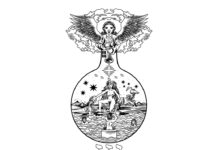
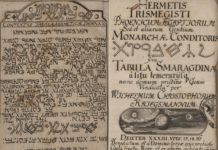
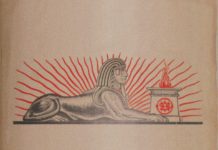







The Inner Order of the Rosicrucians forms the Mystery School for Christianity. By Christianity, I don’t mean the conventional church, but I mean the movement of the Christ. I don’t use “Christ” and “Jesus” interchangeably. Jesus was the man who provided the lower vehicles for the Christ for his mission on Earth. The other religions also have mystery schools, but not of Rosicrucianism. This is information from Heindel.
Comments are closed.